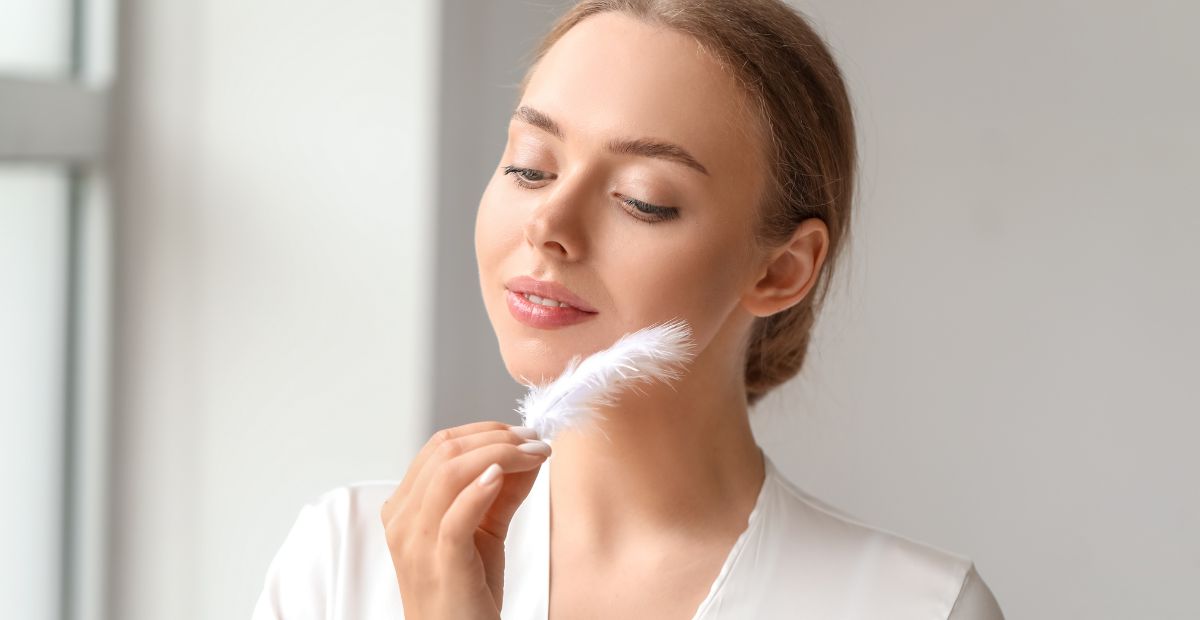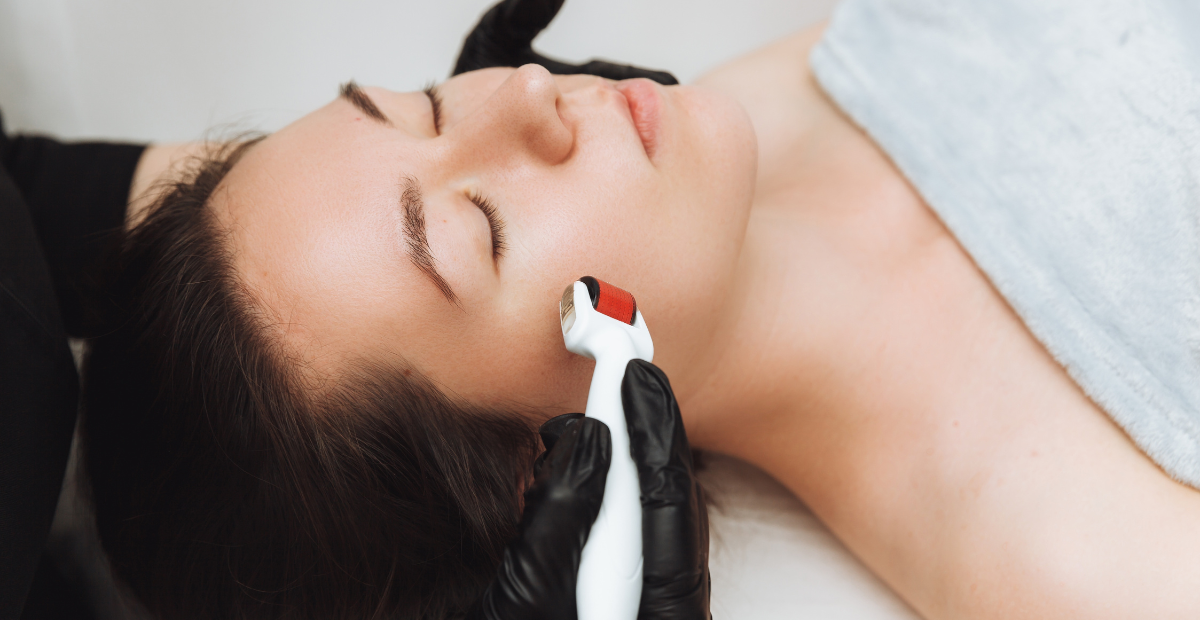Ceramides: Why Are They the Wonder Ingredients for Your Skin?
Onskin Content Team
Your guides through the skincare chaos

If ceramides had a resume, the skills section in it would be so impressive, even hyaluronic acid would be envious! Why? Because ceramides are suitable for all ages and skin types (yes, even sensitive!), help our skin resist irritants, and they don’t skate by on that alone! In this post, let us prove that ceramides deserve to be raved about and added to your routine (or at least to be tried out!)
Spoiler: these are must-haves for everyone on an anti-acne journey.
What Are Сeramides?
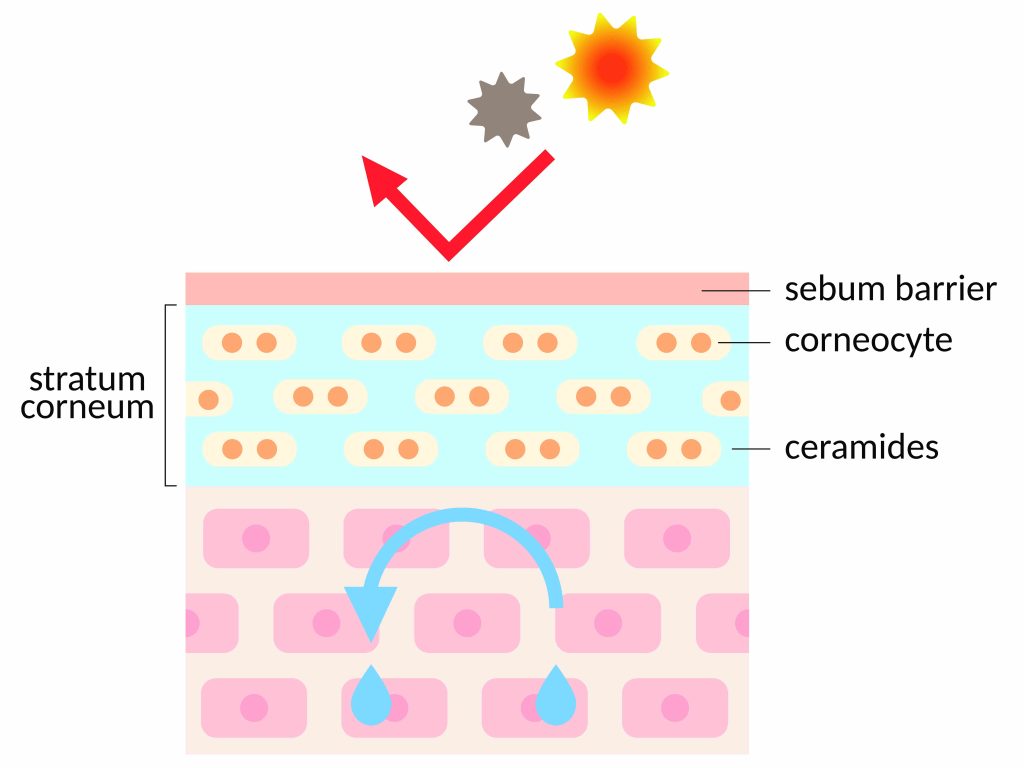
Ceramides are fats, or lipids, that make up 30–40% of your outer skin layer, known as the epidermis. (For those science-minded, the other components of the epidermis are fatty acids and cholesterol.) The outer layer is like security control at the entrance to your body, safeguarding it from external pollution and toxins, and the role of ceramides is to seal skin cells in it together. If you’re more of a visual type like us, imagine that skin cells are bricks and ceramides are the mortar that keeps everything in place.
Unfortunately, the number of ceramides in our skin isn’t steady, and factors like
- excessively cold or hot weather, temperature swings, extreme sun exposure;
- low humidity;
- harsh cosmetic ingredients;
- aging;
- and a genetic tendency towards psoriasis and eczema
can pack a punch and cause ceramides to dwindle—and that’s where the term “damaged skin barrier” enters the stage.
Ceramides for Restoring the Barrier
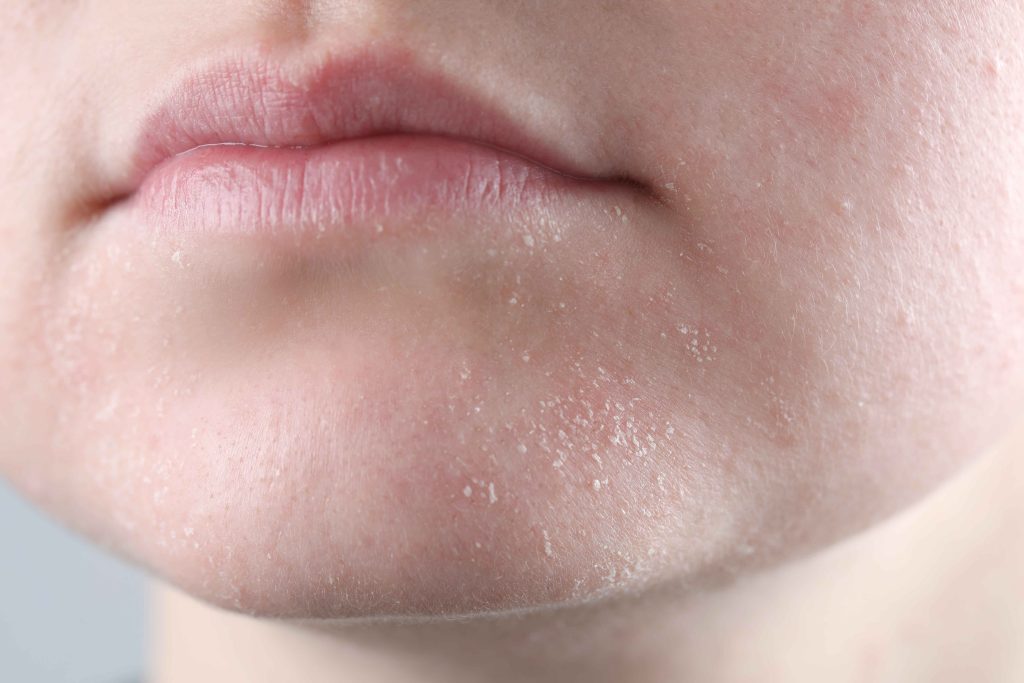
First things first, how do you know your skin barrier is damaged and is sending you an SOS? The most common telltale marks of that are extremely dry skin that feels tight, itchiness, flakiness, discolored patches, and sensitive or even inflamed areas. Do any of these sound all too familiar? Before you start spiraling over not being a “good parent” for your skin, self-diagnose, or make any grand reforms to your regimen, consider turning to a dermatology expert—they’ll examine your skin and give the optimal care recommendations to suit your particular situation.
If consulting a specialist isn’t an option for you right now, just know that products infused with ceramides are usually among the top options physicians suggest using for the stripped barrier—studies prove that ceramides help fortify the broken protective layer and calm your skin, exactly what you need when your skin is “angry.”
This is especially beneficial if you’re using any traditional acne treatments, which often come with the price of irritations and redness. Say you’ve overdone it with azelaic acid the other night, and you wake up to a mega-itchy, super-irritated version of your complexion. “Dear skin, I’m TRYING, OK?” A ceramide-based moisturizer will help soothe your skin and restore the protective barrier to its healthy state, allowing you to keep your skin clear while ensuring that harsh ingredients don’t disrupt the protective lipid barrier—a win-win!
Ceramides for Moisture Balance
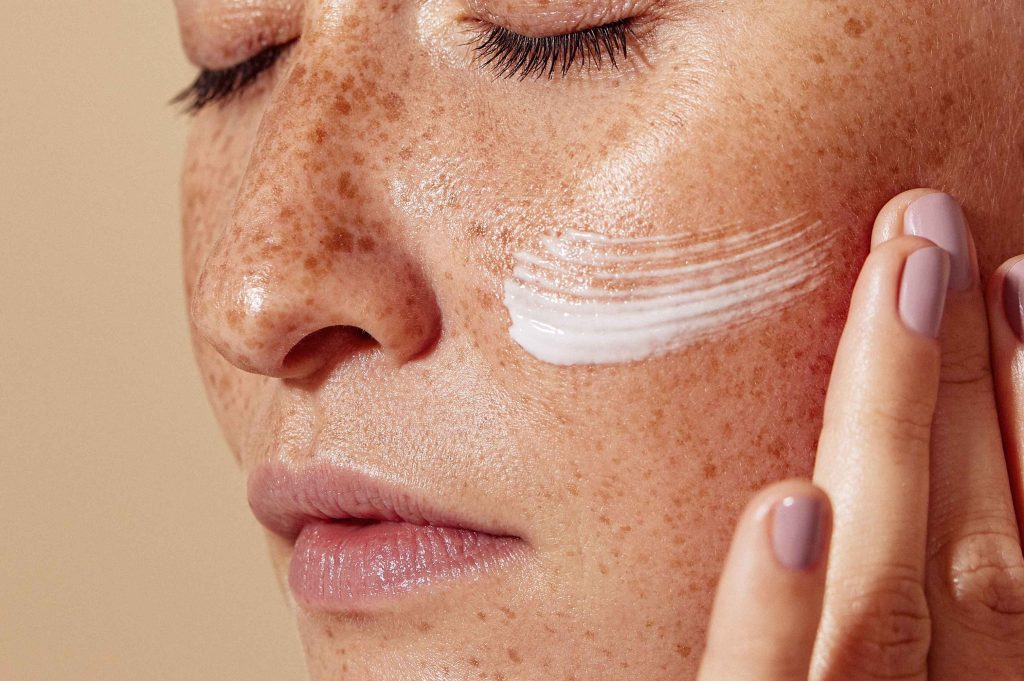
Supple, firm, and hydrated skin is what probably anyone wouldn’t be against as their Christmas present. Ceramide-rich cosmetics will help you get closer to your dream skin even without Santa’s help—they fight water loss by sealing it in your skin.
Ceramides for Reduced Signs of Aging

As we mentioned earlier, with age, our skin’s natural ceramide reserves start to run dry, which promotes the skin getting thinner and the appearance of fine lines and wrinkles accelerating. Applying ceramide-based skincare will replenish ceramides, supporting the skin’s elasticity, firmness, and smoothness, all while preventing pigmentation and age spots.
Can You Layer Ceramides with Other Ingredients?
Another beneficial aspect of ceramides is that you can pair them with any other components in your routine. “Vitamin C? Okay, I don’t mind. Retinoids? No problem, we could be great buds!” Still, some skin experts suggest that ceramides show their top performance when layered with hydrating ingredients like collagen, aloe vera, hyaluronic acid, and others.
How Do You Apply Ceramides?
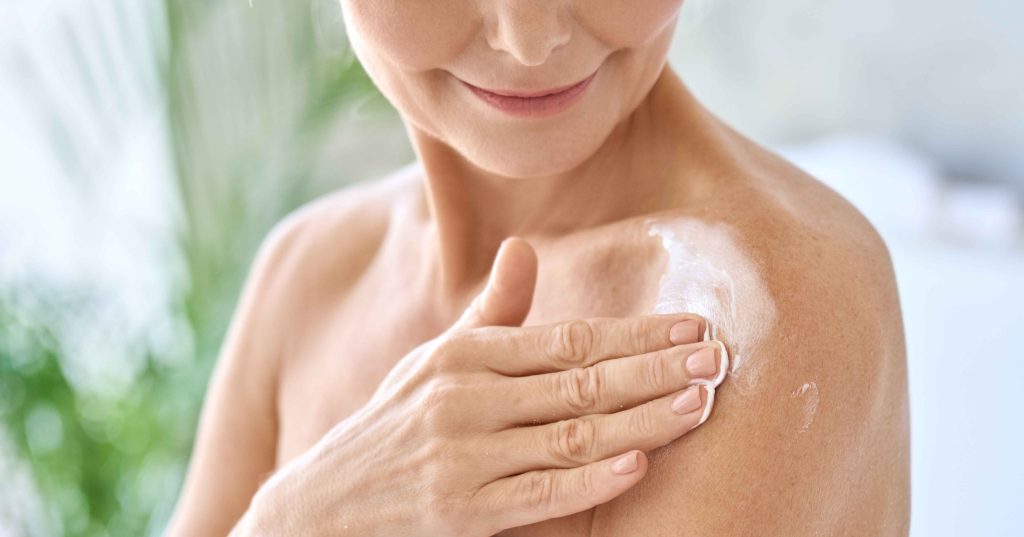
There’s no hard-set rules on how much or how often you should use them—the basic rule is that you’re more likely to see noticeable improvements in your skin when using these ingredients regularly. Most dermatologists advise applying skincare infused with ceramides twice a day (in the morning and in the evening) after you’ve washed your face and used a toner. For body care, the ideal time to use them is right after a shower or bath, as they work best when sealing in extra moisture.
How Do You Find Them on the Label?
Keep your eyes peeled for the word “ceramide” in the ingredient list (although that’s not always the case):
- Ceramide AP,
- Ceramide EOP,
- Ceramide NG,
- Ceramide NP,
- Ceramide NS.
In addition to these, here are other compounds akin to ceramides, though they’re not intuitively recognizable as such:
- Phytosphingosine
- Sphingosine
In fact, phytosphingosine and sphingosine are found naturally in the epidermis (the outer skin layer) along with ceramides, fatty acids, and cholesterol, and are super helpful for maintaining a healthy balance in the skin barrier.
We know you’re happy the science bit is over! By the way, if you’re not into chemistry but still want to invest in cosmetics with safe, potent ingredients, then an ingredient scanner app (like OnSkin, for example) will save a ton of your time and effort. Just snap a product or type in its name—you’ll see the good-for-you and questionable components marked and their possible effects clearly explained. What’s more, such apps can also show how suitable the product is for your particular skin needs (because an effective product doesn’t always mean effective for you, right?)
Final Thoughts
Congrats on getting through this long song of praise about ceramides—although, let’s be honest, they absolutely deserve it! As you’ve learned, ceramides are crucial for skin health, especially if you struggle with dryness or a depleted skin protective layer. And before we say “See you soon!”, a quick reminder for those diligently tending to their skin without seeing desired results: skincare can be like weaving a spider’s web. It may appear chaotic at first, but each small effort counts, and the results are worthwhile. You’re rocking it!
FAQ
-
Where do I start with OnSkin?
Download the app and think of a product you’d like to know more about. Then, go to the main screen and choose how you’d like to get the info —by manually looking it up in the search bar, by scanning its barcode, or by simply taking a picture of the packaging. Once you’ve done any of these, you can see how safe the product is and if it suits your skin or hair (if this analysis is available).
-
What is Safety Rating, and how is it calculated?
In OnSkin, we base product rates on ingredients. Each is closely studied by our medical team and then evaluated. This way, each product gets a score from 0 to 100, with 100 as the safest level.
Safety Levels
- Excellent (76–100)
- Good (51–75)
- Not great (26–50)
- Bad (0–25)
These scores are backed by the latest scientific studies. You can find links to the resources we’ve used on each ingredient page. To assess the safety of product ingredients, we evaluate them according to the following parameters/criteria
- Endocrine disruption risk / Reproductive toxicity
Indicates the probability of mimicking, blocking, or interfering with the body hormones.
- Сarcinogenicity
Measures the potential risk of inducing cancer.
- Allergy risk
Estimates the probability of an allergic reaction.
- High concentration alert
Determines the risk of being unsafe in certain amounts.
-
What is Skin Match?
Based on the info you input about your skin type, age, skin care goal, and other “settings,” OnSkin checks how well a product is tailored to your unique skin needs — it’s basically like a dermatologist helping you find the right products, minus the fees and the long wait. The product you’re checking might be labeled as It’s a match!, Hit-or-miss, or Not a match for you. The app also detects ingredient groups such as Anti-acne, Anti-inflammatory, Moisturizes, May be drying, Comedogenic, and others — by tapping one, you see exactly what ingredients from this or that group are in the product.
-
I seem to have a problem with using the app. Who should I contact?
Please reach out to us at [email protected], and we’ll carefully look into your issue. Your ideas for improving the app are also very welcome!
-
Do you have an Android version?
Not yet! Hey Android users, we hear you, and we're thinking about making an Android version, but we haven't started the development yet.
Tracker Sent!
It’s on the way to your inbox.



